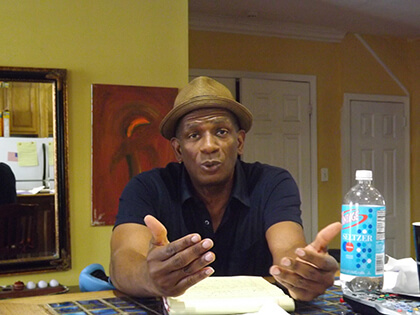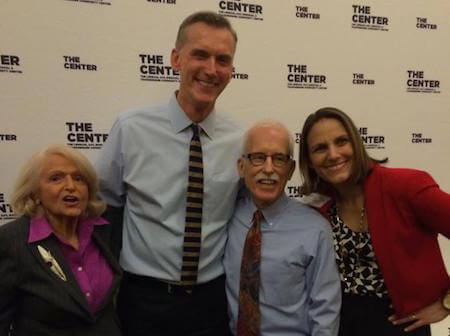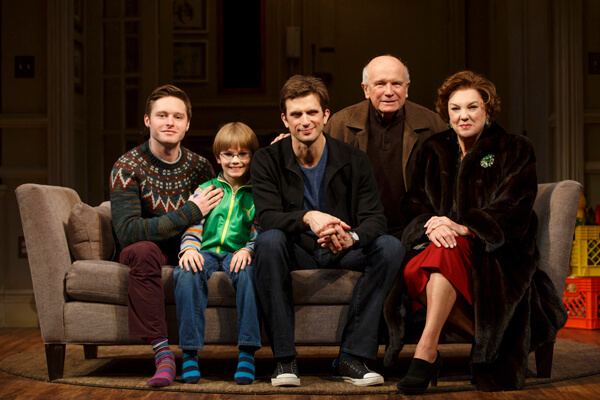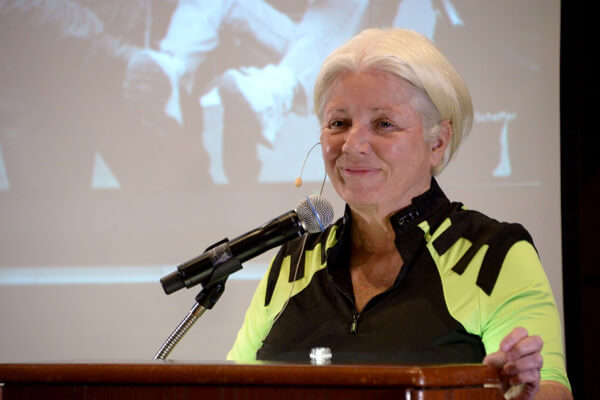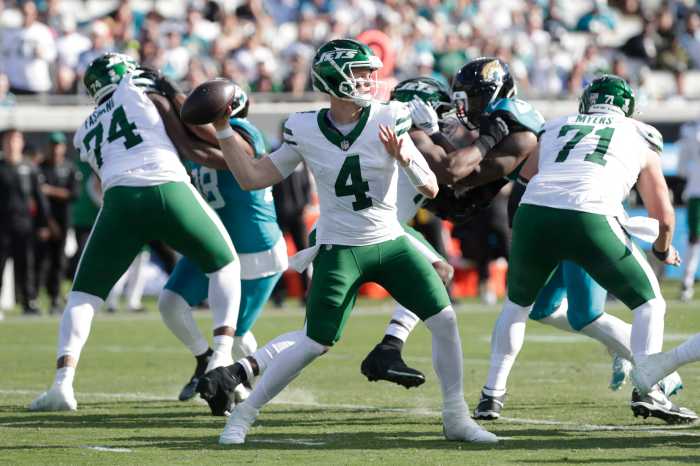Nathan Kerr in his Brooklyn home. | GAY CITY NEWS
BY DUNCAN OSBORNE | Saying that the views of African-American gay men are largely missing from current discussions around HIV prevention, a group of activists hope to revive a New York City organization that was once lauded for its community building and innovative HIV prevention work.
“The voice of black gay men has really gone silent,” said Nathan Kerr, who has long experience with AIDS and health groups. “We need to find a way to reengage, and the strategy is more than just disease prevention.”
Kerr is part of a group of researchers and activists who are exploring the establishment of the Black LGBT Alliance of New York. That working name may change as could the mission of any group that is eventually founded.
“It is early,” said Kerr during an interview in his Brooklyn home. “We’re working on definitions, we’re working on structure.”
Organizers say health issues must be part of community building, focus on economic opportunities
Their initial model is People of Color in Crisis (POCC), an AIDS group that operated in Brooklyn until Michael Roberson, its executive director in 2007 and 2008, was caught stealing government funds and it was forced to close.
Under Gary English, who headed POCC from 1997 to 2007, POCC was lauded for Many Men, Many Voices, its comprehensive HIV prevention program, and its annual Pride in the City event, and for its role in founding the Black Gay Research Group. In 2003, POCC, which was founded in 1989, co-sponsored the first Black Gay Research Summit.
English is among those who hope to found the new group.
The underlying view in POCC’s work was that black gay men have experiences that are fundamentally different from their white, Latino, or Asian peers and that health campaigns, economic development, and other improvement efforts must consider that experience.
“One of the things we’ve struggled with over the past 20 to 30 years is are you gay first or are you black first?” Kerr said.
Pride in the City was a party that allowed its thousands of participants to be both and included health and wellness components, such as HIV testing.
“This event does a lot of different things on different levels,” English said in a 2004 interview with Gay City News. “It gives exposure to prevention messages, access to testing and referrals, and it’s a great way to form community.”
For Kerr, the event avoided what might be seen as a dreary health fair, but delivered the content of a health fair to guests.
“Pride in the City was brilliant because it mobilized black gay men around culture and health,” Kerr said. “My personal experience is that developing community through disease prevention is a bust.”
The need for many voices in HIV prevention was apparent at a June 17 community meeting organized by the Treatment Action Group (TAG), a leading treatment think tank and advocacy organization. TAG has a contract with the state health department to assess the need for campaigns promoting pre-exposure prophylaxis (PrEP), anti-HIV drugs taken by uninfected people to prevent infection, and post-exposure prophylaxis (PEP), anti-HIV drugs taken by someone immediately after they are exposed to HIV to stop infection from taking hold.
PrEP and PEP are central features of a plan proposed by 30 AIDS groups to cut new HIV infections in New York from the current 3,400 a year to 730 or less annually by 2020.
The plan also envisions significantly expanding the number of HIV-positive people who are in treatment and have an undetectable viral load. This approach is known as treatment as prevention.
There is science that suggests that if these bio-medical interventions are used in a community at the same time, they will reduce new infections dramatically, effectively ending the epidemic. The key questions to be answered are whether people will take these drugs and how to let them know they are available.
Attendees at the June 17 meeting, including Kerr, made it clear that any messaging about PrEP and PEP had to be tailored to specific communities and that launching just one campaign would not work. With these bio-medical interventions looking like they will be a primary form of HIV prevention in the future, groups want very much to be involved.
“Two years from now, we don’t want to be saying ‘We don’t know why black gay men aren’t doing this,’” Kerr told Gay City News.
But bio-medical interventions cannot be the end of the conversation, he added. The Alliance may also work in community building, run a jobs program, and deal with health matters other than HIV. The group will incorporate soon, and Kerr said it was likely the group could produce a Pride in the City event within a year.
Historically, POCC and Gay Men of African Descent (GMAD), the two New York City groups serving men of color, raised little of their cash from the communities they served and relied almost entirely on government contracts and grants. With constrained federal, state, and city budgets, raising the money to launch a new group will be a significant challenge. This new effort will rely on the community, Kerr said.
“Our community resources will be the initial funding,” he said. “That is to send a message that if you care enough, build your own community.”

